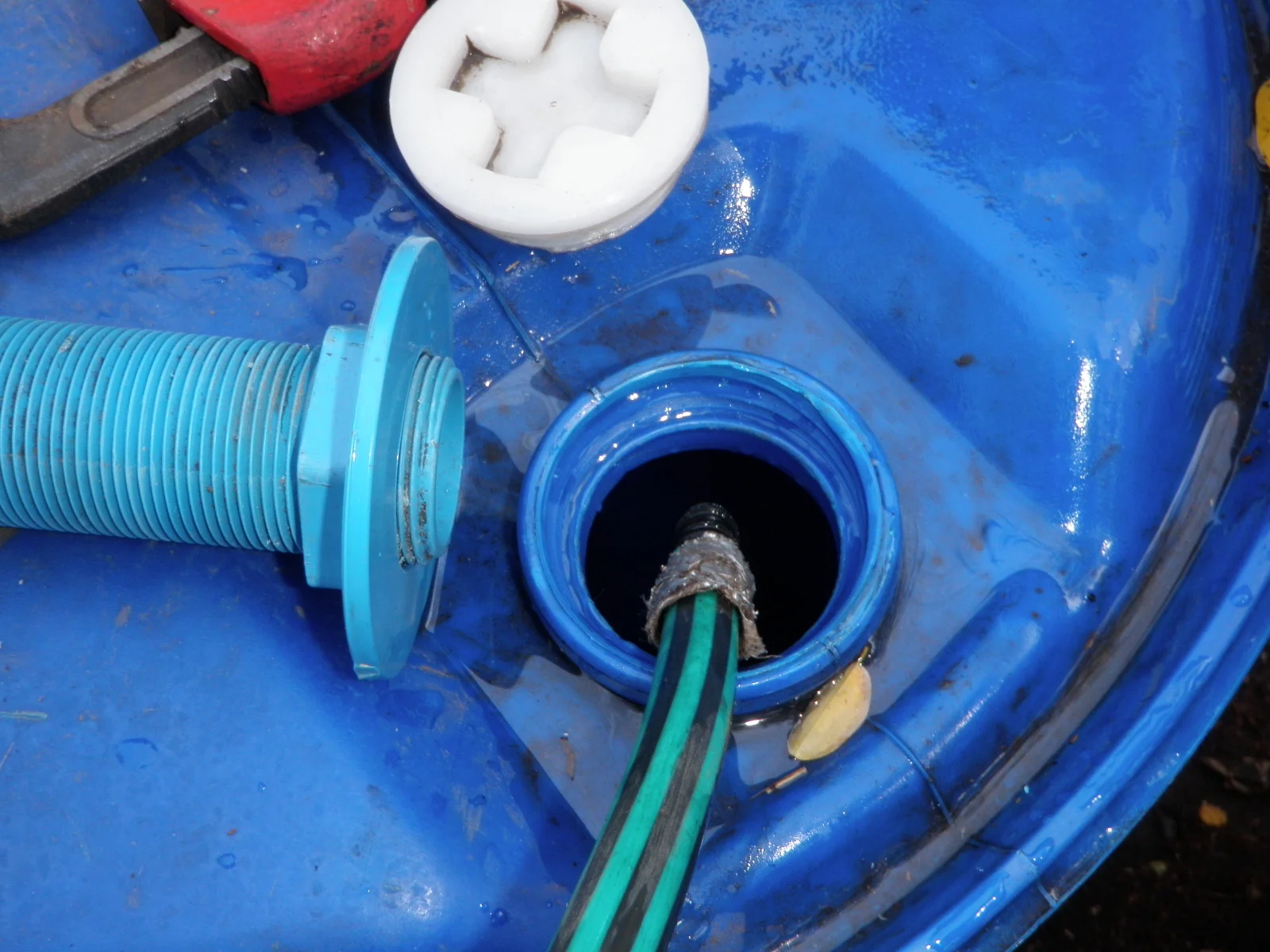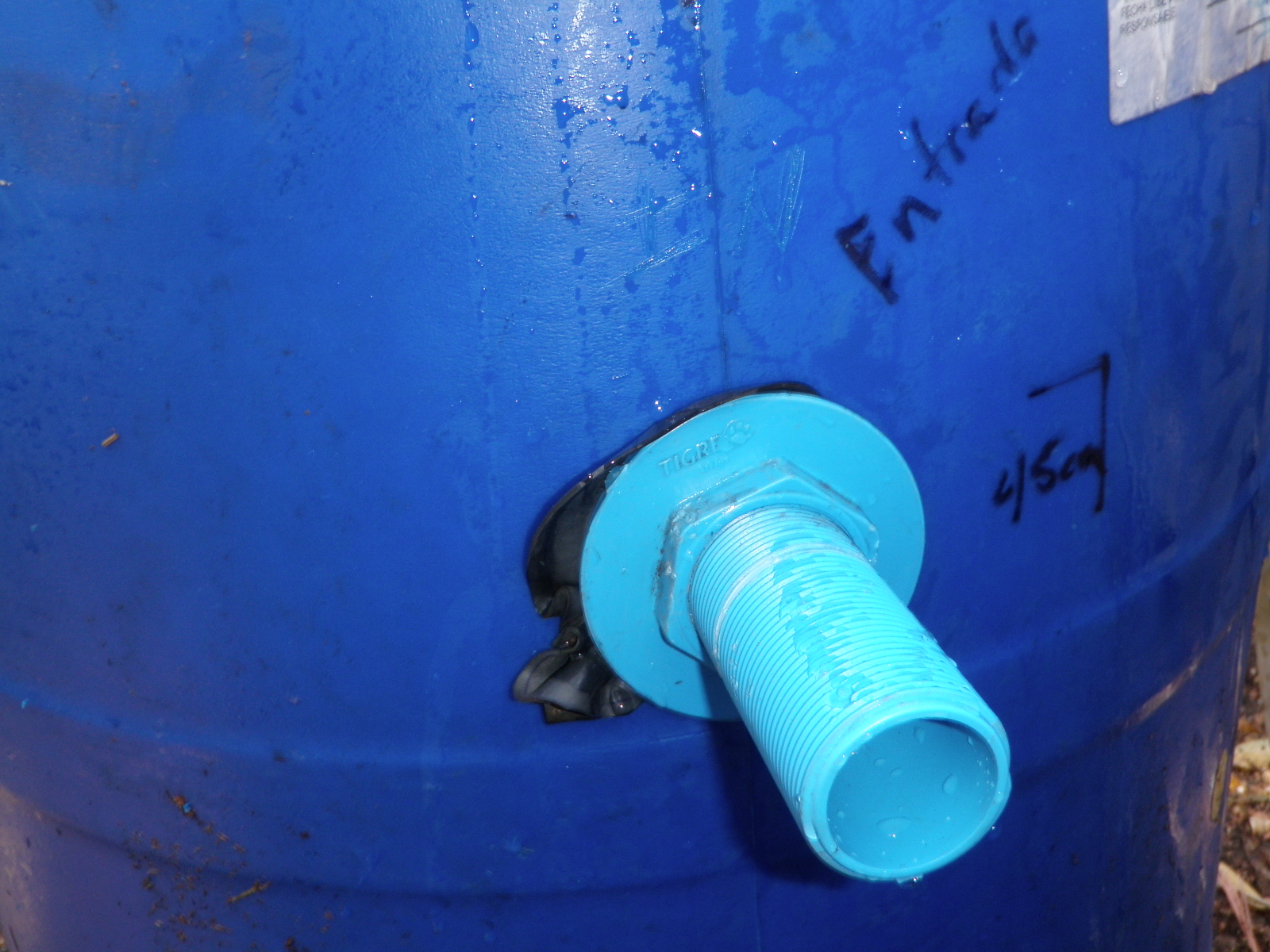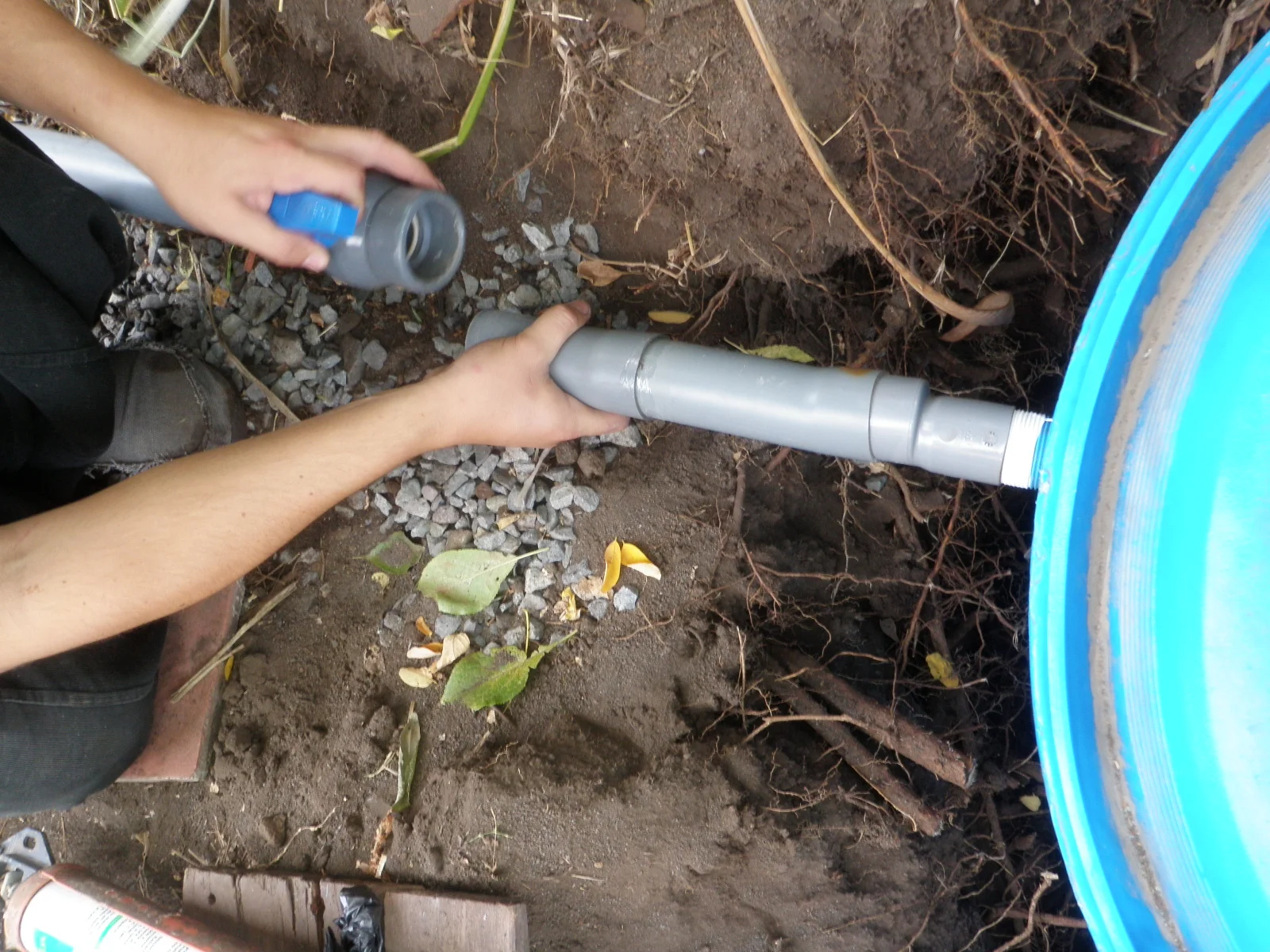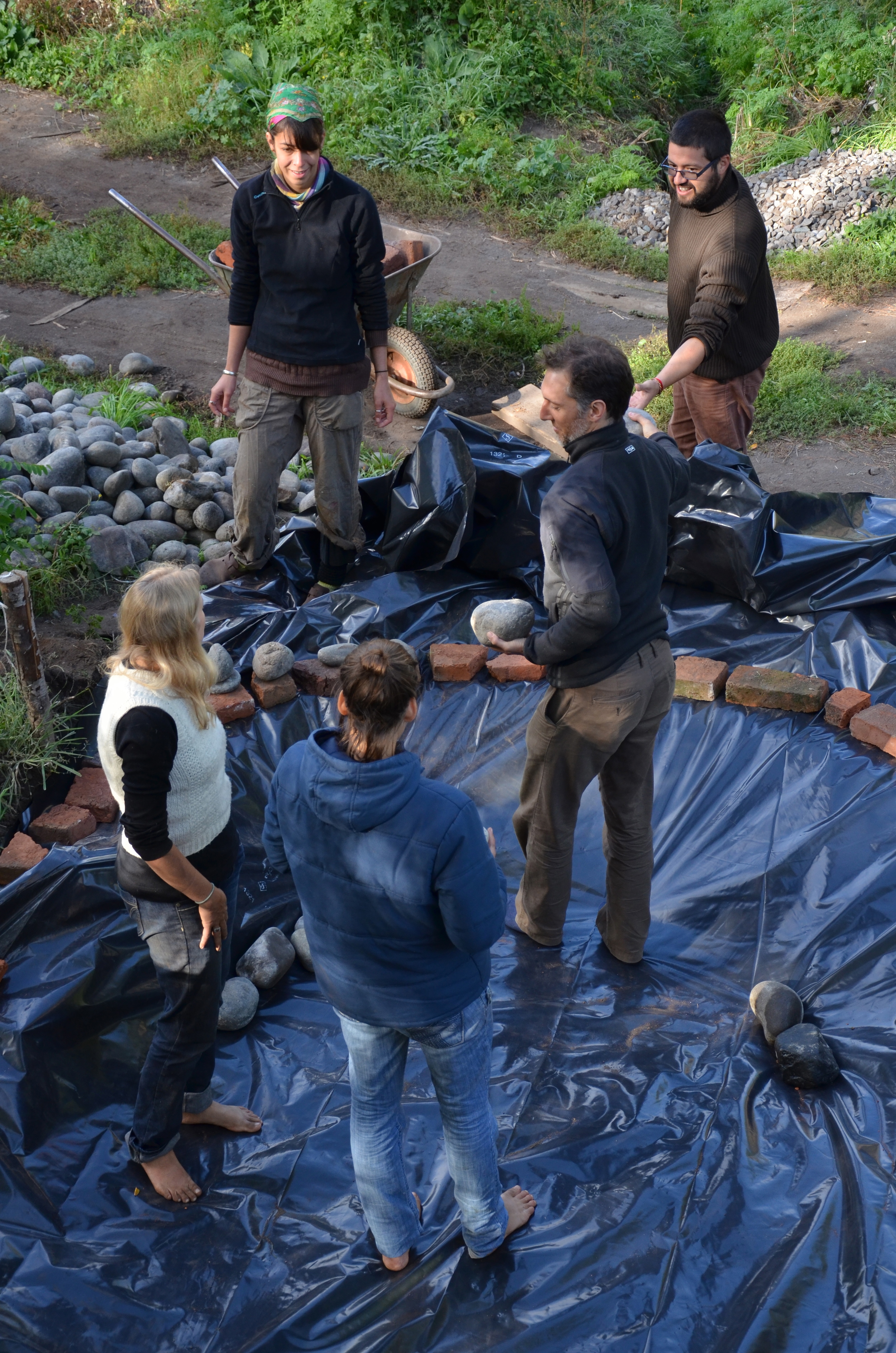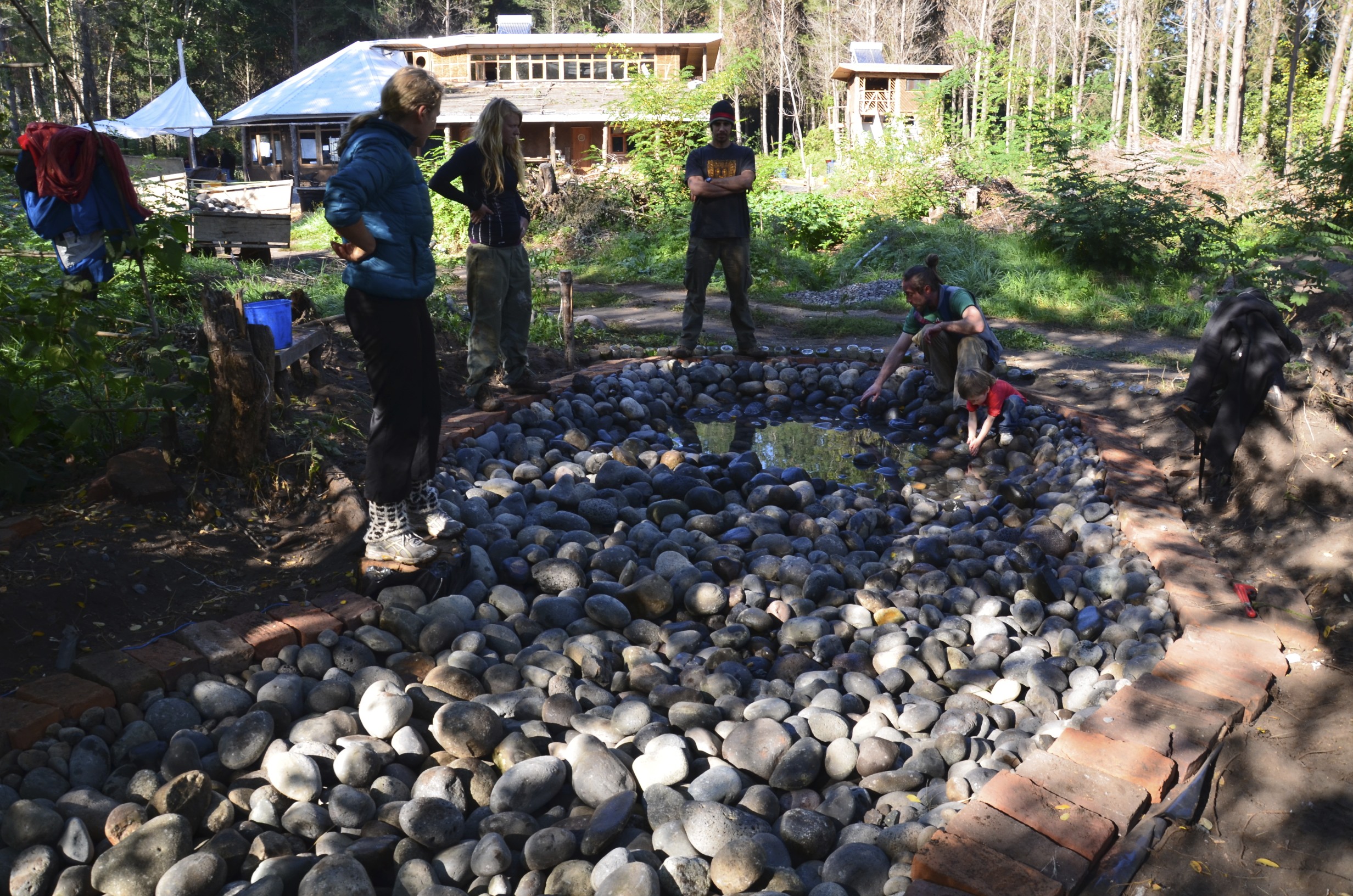This page illustrates the construction of a grey water system at Ecoescuela El Manzano, in BioBio, Chile. I was privileged to spend 6-weeks in this permaculture community. During this time I collaborated with Kleiwerks International to and Ecoescuela to conduct a 2-week workshop. The Women of the Americas Sustainability Initiave workshop focused on natural building, community development, and permaculture. The biofilter described on this page is one of the projects that took place during the workshop. Thank you Eva Wimmer for allowing me to use your photos.
While this system is only for greywater, it is near a common space that plans to have fruit trees in the area. A long-term goal is to be able to reuse the water and thus we wanted it to be as clean as possible. In order to do so, the system includes a grease trap (the yellow barrel in the photo), an anaerobic environment (blue barrels pictured below), and an aerobic environment (rock pond pictured below).
The grease trap was purchased at a local hardware store. It was assembled and set outside of the house below the kitchen window. The goal is to create a place where the fats, oils, and food scrapes that are washed down the kitchen drain are prevented from entering the rest of the system. Having a way to easily discard these byproducts of the kitchen will reduce the complexity of substances in the biofilter.
To build an anaerobic environment we re-purposed old sugar barrels in place of a traditional septic system. This method has its benefits and its drawbacks.
Benefits: 1) Reuse a resources that is local and accessible; 2)They are more forgiving in the highly seismic zone of Chile and will be less likely to fracture than concrete Drawbacks: 1)They are challenging to fit pipes to because they are round and therefore the seal is not that tight. In our case, this greywater so a little leakage overtime will not be harmful; 2) The bees love the dissolved sugar and want to hang around while you are building the system
Creating the Aerobic Environment:
The 'rock pond' is for the effluent from in the barrels flows into after the bacteria have begun to breakdown the nutrients. This part of the project required a lot of labor. There was an old tree thunk that needed chansawing to remove and another trunk that was too large to be taken out. The trick was how to shape the liner around the trunks (see image of three women brain storming). We used a thick plastic to line the basin.
The rocks were from a nearby river. We were grateful that some of the men who work at El Manzano (masters that in there trade) were willing to allot some time to collecting, transporting, and unloaded the stones. It took two full truck loads! Many of the participants of the workshop gathered for an afternoon of securing the liner, placing the rocks, and ensuring the slight downward slope was maintained. We tested to make sure that the basin would retain the water and then filled it to the top so that it would be level with the ground.
Never letting the water pool above the rocks is key to this design. The water should move under the rock surface toward the end of the "pond". By the time it discharges it is clean enough to use for plants.






